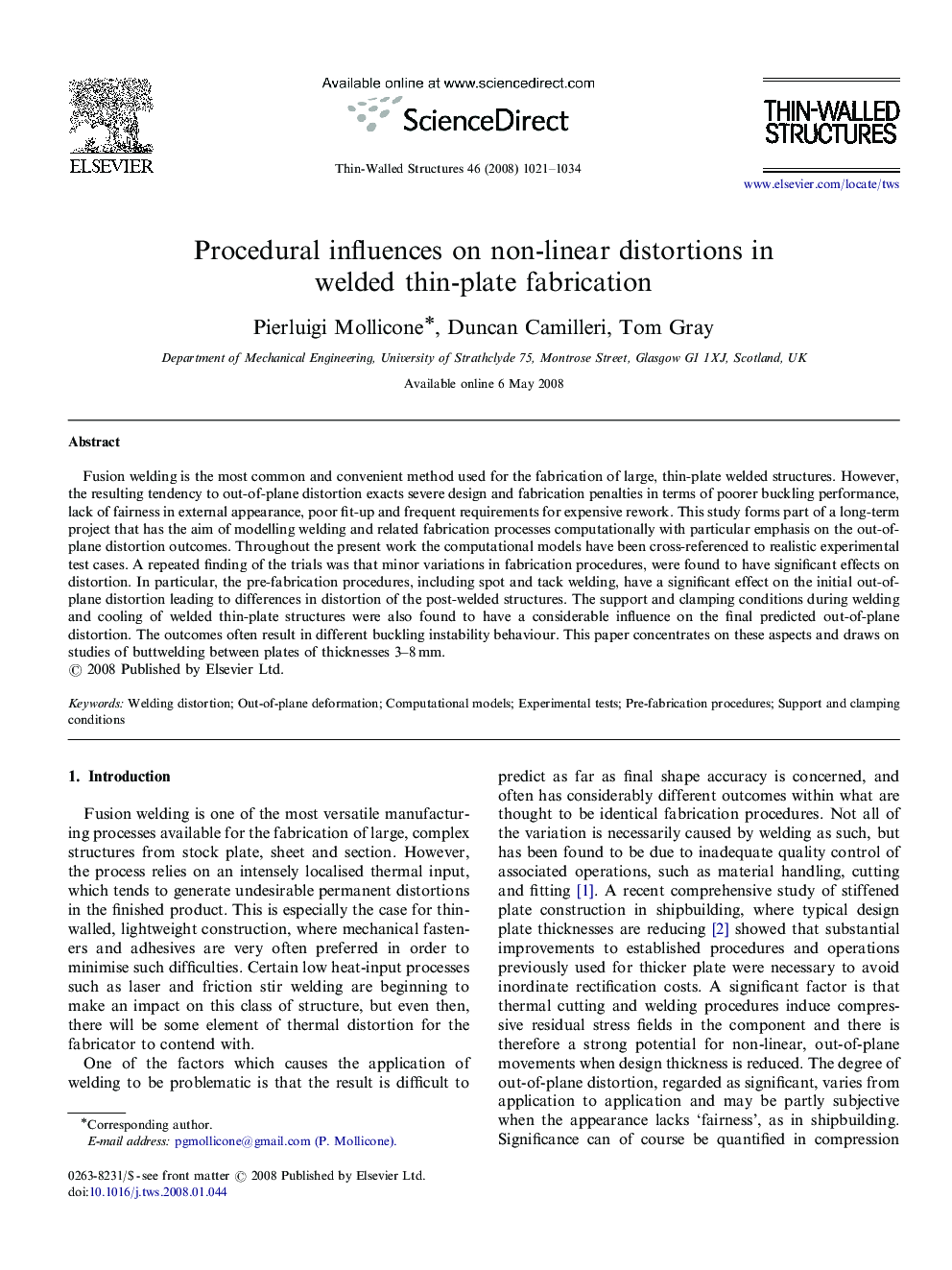| Article ID | Journal | Published Year | Pages | File Type |
|---|---|---|---|---|
| 309995 | Thin-Walled Structures | 2008 | 14 Pages |
Fusion welding is the most common and convenient method used for the fabrication of large, thin-plate welded structures. However, the resulting tendency to out-of-plane distortion exacts severe design and fabrication penalties in terms of poorer buckling performance, lack of fairness in external appearance, poor fit-up and frequent requirements for expensive rework. This study forms part of a long-term project that has the aim of modelling welding and related fabrication processes computationally with particular emphasis on the out-of-plane distortion outcomes. Throughout the present work the computational models have been cross-referenced to realistic experimental test cases. A repeated finding of the trials was that minor variations in fabrication procedures, were found to have significant effects on distortion. In particular, the pre-fabrication procedures, including spot and tack welding, have a significant effect on the initial out-of-plane distortion leading to differences in distortion of the post-welded structures. The support and clamping conditions during welding and cooling of welded thin-plate structures were also found to have a considerable influence on the final predicted out-of-plane distortion. The outcomes often result in different buckling instability behaviour. This paper concentrates on these aspects and draws on studies of buttwelding between plates of thicknesses 3–8 mm.
